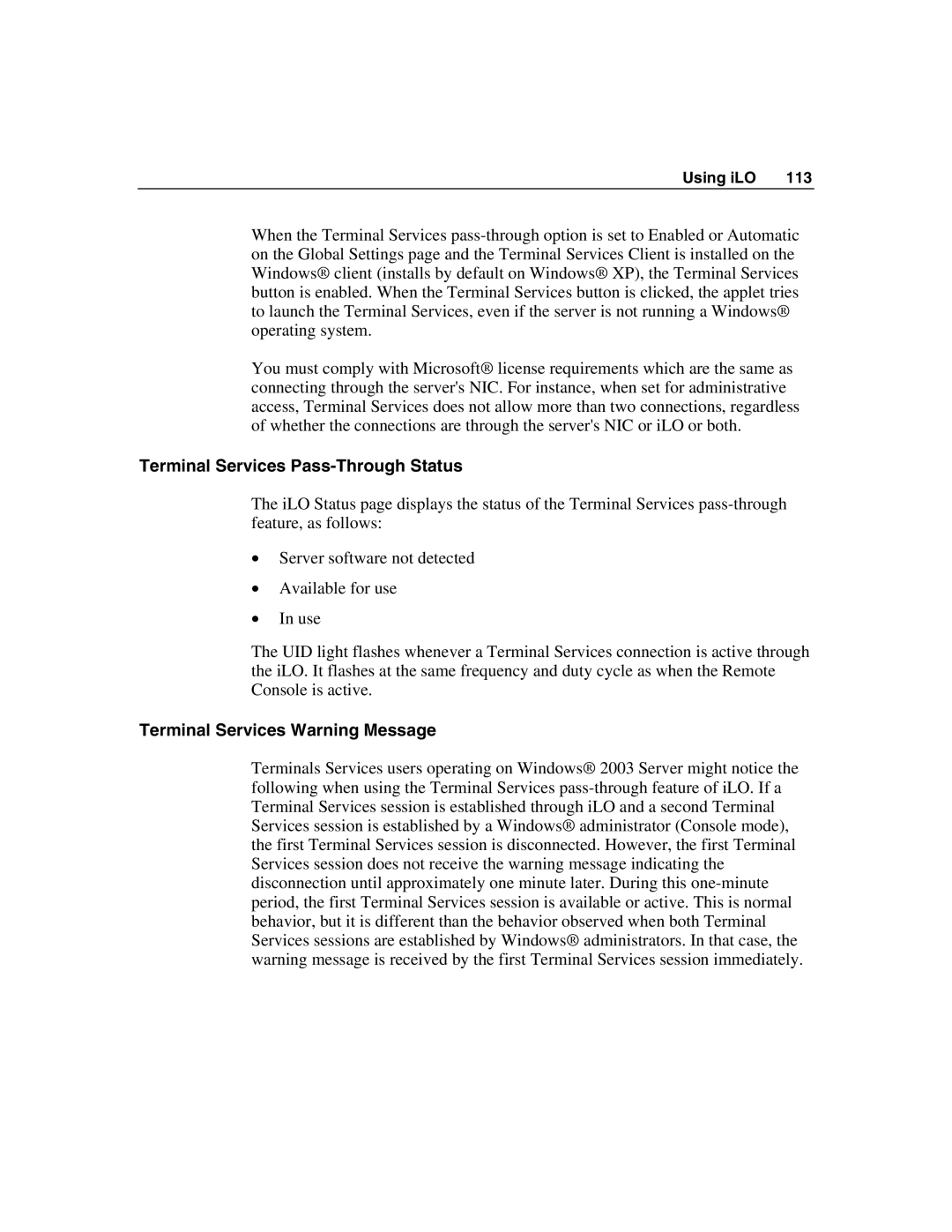Using iLO | 113 |
When the Terminal Services
You must comply with Microsoft® license requirements which are the same as connecting through the server's NIC. For instance, when set for administrative access, Terminal Services does not allow more than two connections, regardless of whether the connections are through the server's NIC or iLO or both.
Terminal Services Pass-Through Status
The iLO Status page displays the status of the Terminal Services
•Server software not detected
•Available for use
•In use
The UID light flashes whenever a Terminal Services connection is active through the iLO. It flashes at the same frequency and duty cycle as when the Remote Console is active.
Terminal Services Warning Message
Terminals Services users operating on Windows® 2003 Server might notice the following when using the Terminal Services
